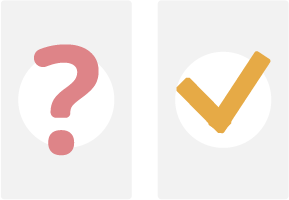Reading Test (3)
Read the text and choose the correct answer.
I. Some American Indians grew corn, sunflowers, squash, beans, and pumpkins in garden plots. To prepare a garden plot, they first killed the trees there by cutting off a ring of bark to kill the tree. Then they scratched the ground with a stone hoe or with the bone of a deer or buffalo, or they used a stick sharpened in the fire. Some Indians put a dead fish into the hole where they planted the corn in order to provide food for the corn plant.
A. This story is mainly about -
Read the text and choose the correct answer.
I. Some American Indians grew corn, sunflowers, squash, beans, and pumpkins in garden plots. To prepare a garden plot, they first killed the trees there by cutting off a ring of bark to kill the tree. Then they scratched the ground with a stone hoe or with the bone of a deer or buffalo, or they used a stick sharpened in the fire. Some Indians put a dead fish into the hole where they planted the corn in order to provide food for the corn plant.
B. The dead fish in the story was used -
Read the text and choose the correct answer.
I. Some American Indians grew corn, sunflowers, squash, beans, and pumpkins in garden plots. To prepare a garden plot, they first killed the trees there by cutting off a ring of bark to kill the tree. Then they scratched the ground with a stone hoe or with the bone of a deer or buffalo, or they used a stick sharpened in the fire. Some Indians put a dead fish into the hole where they planted the corn in order to provide food for the corn plant.
C. Why did the Indians kill the trees?
Read the text and choose the correct answer.
I. Some American Indians grew corn, sunflowers, squash, beans, and pumpkins in garden plots. To prepare a garden plot, they first killed the trees there by cutting off a ring of bark to kill the tree. Then they scratched the ground with a stone hoe or with the bone of a deer or buffalo, or they used a stick sharpened in the fire. Some Indians put a dead fish into the hole where they planted the corn in order to provide food for the corn plant.
D. Which of these is not mentioned in the story?
Read the text and choose the correct answer.
II. The Indians made little progress during the thousands of years before the Europeans came. One reason for this was that horses, cows, sheep, pigs, and chickens were not found in America. Without horses, the Indians had a hard time digging up the soil, and they could only get animal food by hunting. Another reason for their lack of progress was that they did not know how to use metals to make tools. Stones and flat bones do not make good tools.
A. This story is mainly about -
Read the text and choose the correct answer.
II. The Indians made little progress during the thousands of years before the Europeans came. One reason for this was that horses, cows, sheep, pigs, and chickens were not found in America. Without horses, the Indians had a hard time digging up the soil, and they could only get animal food by hunting. Another reason for their lack of progress was that they did not know how to use metals to make tools. Stones and flat bones do not make good tools.
B. Why is it better to raise animals than to hunt for them?
Read the text and choose the correct answer.
II. The Indians made little progress during the thousands of years before the Europeans came. One reason for this was that horses, cows, sheep, pigs, and chickens were not found in America. Without horses, the Indians had a hard time digging up the soil, and they could only get animal food by hunting. Another reason for their lack of progress was that they did not know how to use metals to make tools. Stones and flat bones do not make good tools.
C. The Indians made tools out of -
Read the text and choose the correct answer.
II. The Indians made little progress during the thousands of years before the Europeans came. One reason for this was that horses, cows, sheep, pigs, and chickens were not found in America. Without horses, the Indians had a hard time digging up the soil, and they could only get animal food by hunting. Another reason for their lack of progress was that they did not know how to use metals to make tools. Stones and flat bones do not make good tools.
D. Which of these is not a tool?
Read the text and choose the correct answer.
III. Eastern Indians who were related lived in the same house or in nearby houses. Today, we call such a group a "clan." Several clans made up a "tribe." From the old men in each clan a ruler or "sachem" was elected. The sachems from the clans met together to make rules for the tribe and to punish those who broke the rules. Each clan also elected a war chief, who led the warriors in battle. Some tribes also elected a head war chief.
A. This story is mainly about -
Read the text and choose the correct answer.
III. Eastern Indians who were related lived in the same house or in nearby houses. Today, we call such a group a "clan." Several clans made up a "tribe." From the old men in each clan a ruler or "sachem" was elected. The sachems from the clans met together to make rules for the tribe and to punish those who broke the rules. Each clan also elected a war chief, who led the warriors in battle. Some tribes also elected a head war chief.
B. Sachems were chosen from among
Read the text and choose the correct answer.
III. Eastern Indians who were related lived in the same house or in nearby houses. Today, we call such a group a "clan." Several clans made up a "tribe." From the old men in each clan a ruler or "sachem" was elected. The sachems from the clans met together to make rules for the tribe and to punish those who broke the rules. Each clan also elected a war chief, who led the warriors in battle. Some tribes also elected a head war chief.
C. The word "clan" describes -
Read the text and choose the correct answer.
III. Eastern Indians who were related lived in the same house or in nearby houses. Today, we call such a group a "clan." Several clans made up a "tribe." From the old men in each clan a ruler or "sachem" was elected. The sachems from the clans met together to make rules for the tribe and to punish those who broke the rules. Each clan also elected a war chief, who led the warriors in battle. Some tribes also elected a head war chief.
D. The head war chief was the head war chief of

Створюйте онлайн-тести
для контролю знань і залучення учнів
до активної роботи у класі та вдома


















